The Jut Art Museum’s Off-Site Project 2025 “Akihisa Hirata: Architecture Arises at the Water’s Edge for Humans” opens on 15 February 2025.
After a six-year hiatus, the Jut Art Museum invites Akihisa Hirata again to exhibit his latest works!
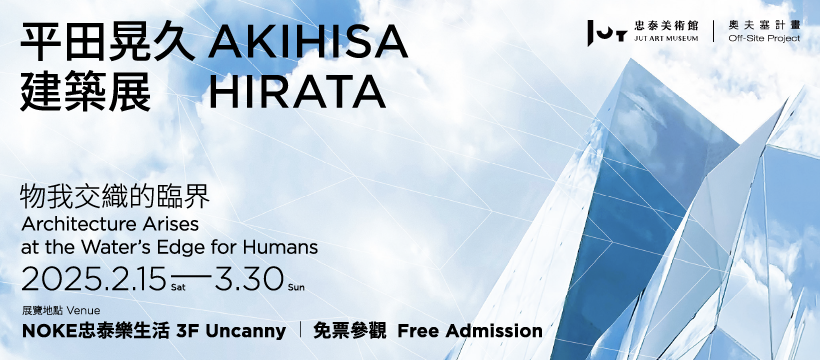
The Jut Art Museum presents its Off-Site Project 2025 titled Akihisa Hirata: Architecture Arises at the Water’s Edge for Humans at “Uncanny” on the 3rd floor of NOKE, marking the museum’s second invitation to Akihisa Hirata, an iconic Japanese architect of the middle generation, to showcase his recent works after a six-year hiatus since his solo exhibition Human Nature: Generosity and Its Form staged in Taiwan in 2019. Revolving around two architectural concepts, namely “karamari-shiro (entangling base)” and “reverberations,” this new exhibition offers in-depth information about Hirata’s recent creations while showing the continuity and breakthrough of his theory via 40 pieces of precious sketches and models. With a fine selection of Hirata’s chefs-d’oeuvre such as HARAKADO, a new landmark in Harajuku, Tokyo, and some major architectural projects in Taiwan, this exhibition reveals Hirata’s philosophical reflections on the harmony between humankind and nature, which extends from sensory perception to space-time, and thereby explores the possibilities of architecture. This free-admission exhibition is on view from 15 February to 30 March 2025. Besides, on 22 March 2025, architect Hirata will conduct a talk in Taipei, Taiwan.
The 40 pieces of precious works that afford us a captivating glimpse of Akihisa Hirata’s philosophy of design.
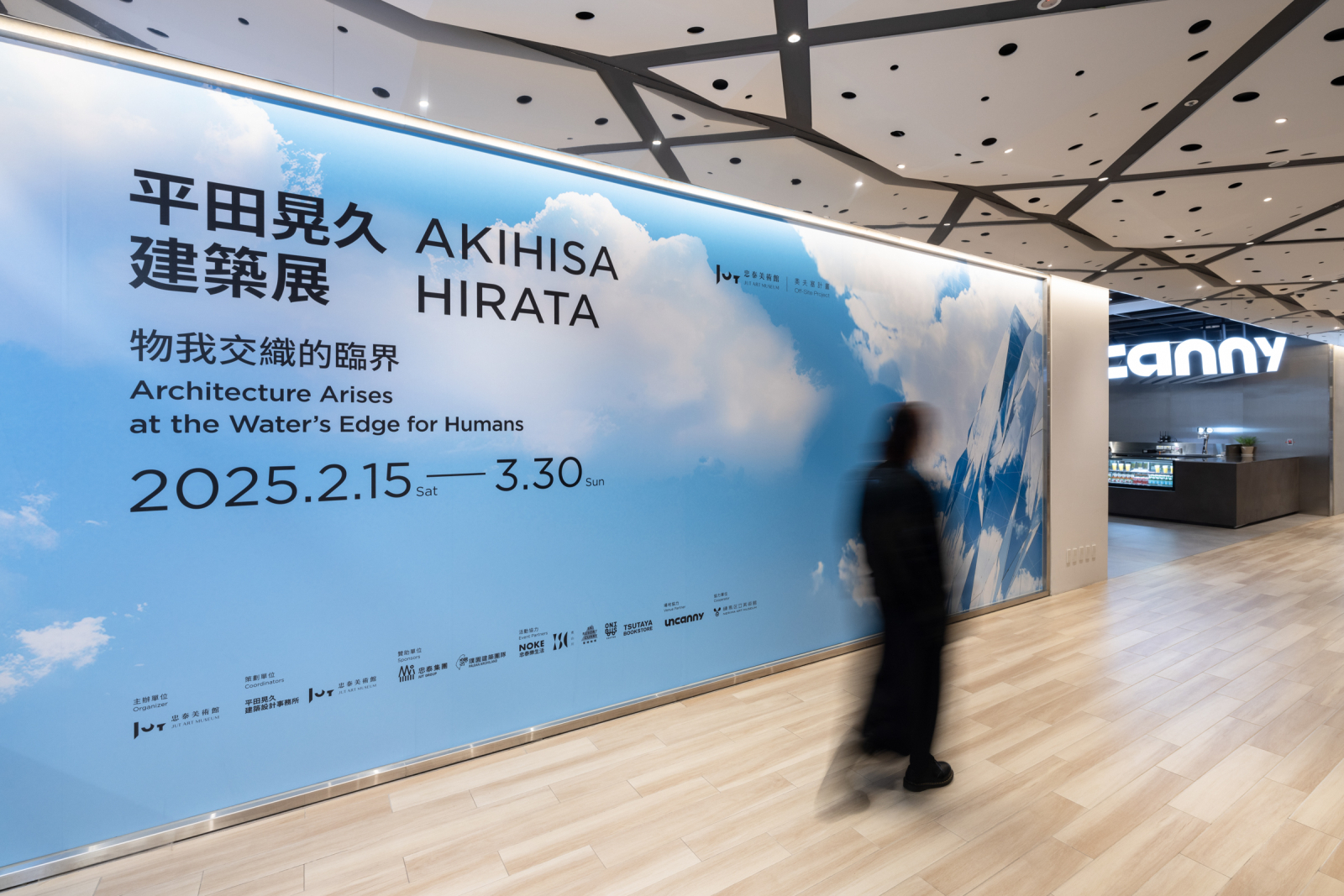

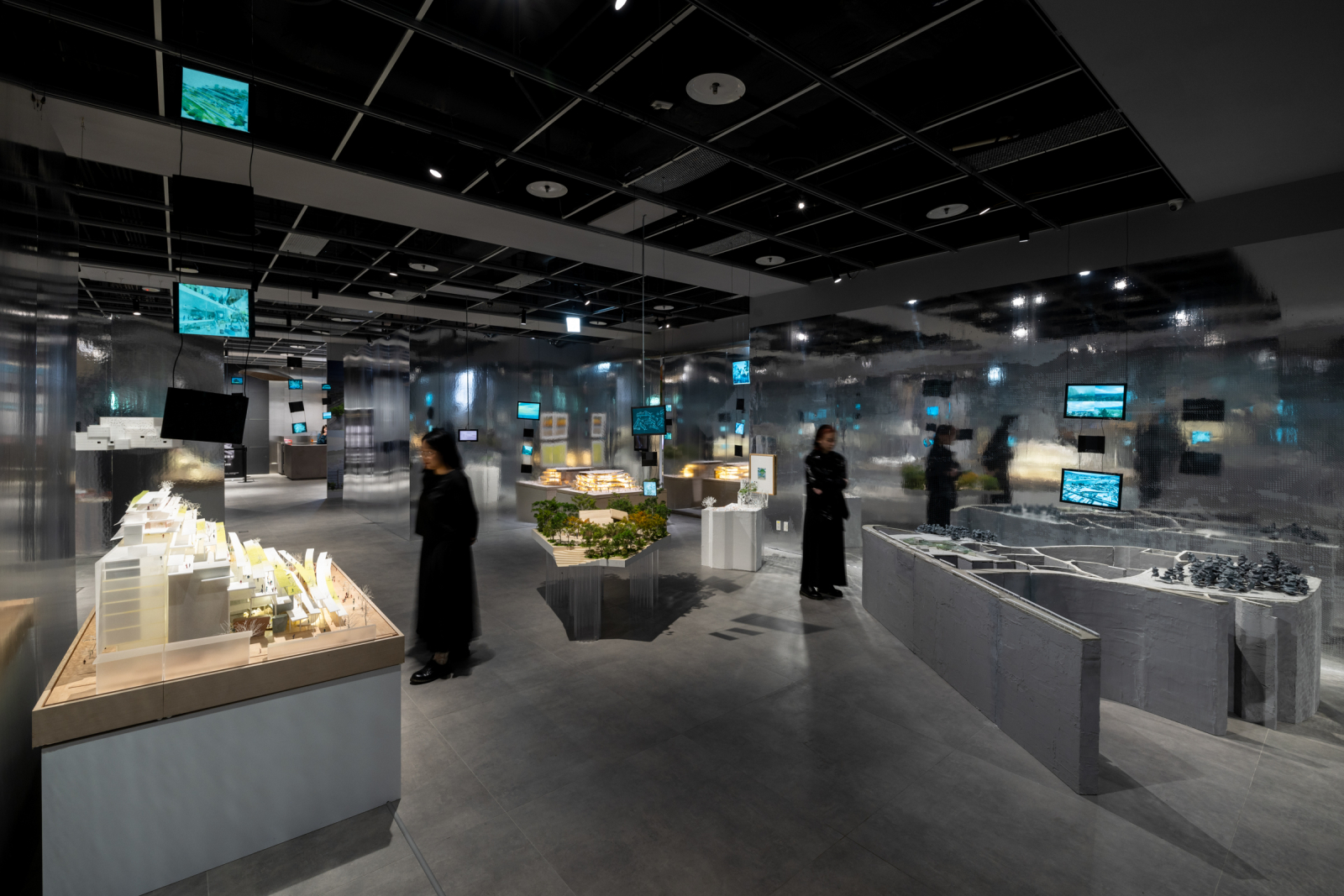
Since its inauguration in 2016, the Jut Art Museum has invited various creators to present their works on atypical exhibition sites instead of in established venues of museums through its long-term artistic practice “Off-Site Project,” which keeps reinterpreting the term “off” by using architectural and artistic praxis in combination. Following the 2021 collaboration with Japanese master architect Kengo Kuma on the exhibition Kengo Kuma : Place / Inspiration, the Jut Art Museum invites Akihisa Hirata, an iconic Japanese architect of the middle generation, to stage his solo exhibition Architecture Arises at the Water’s Edge for Humans this year.

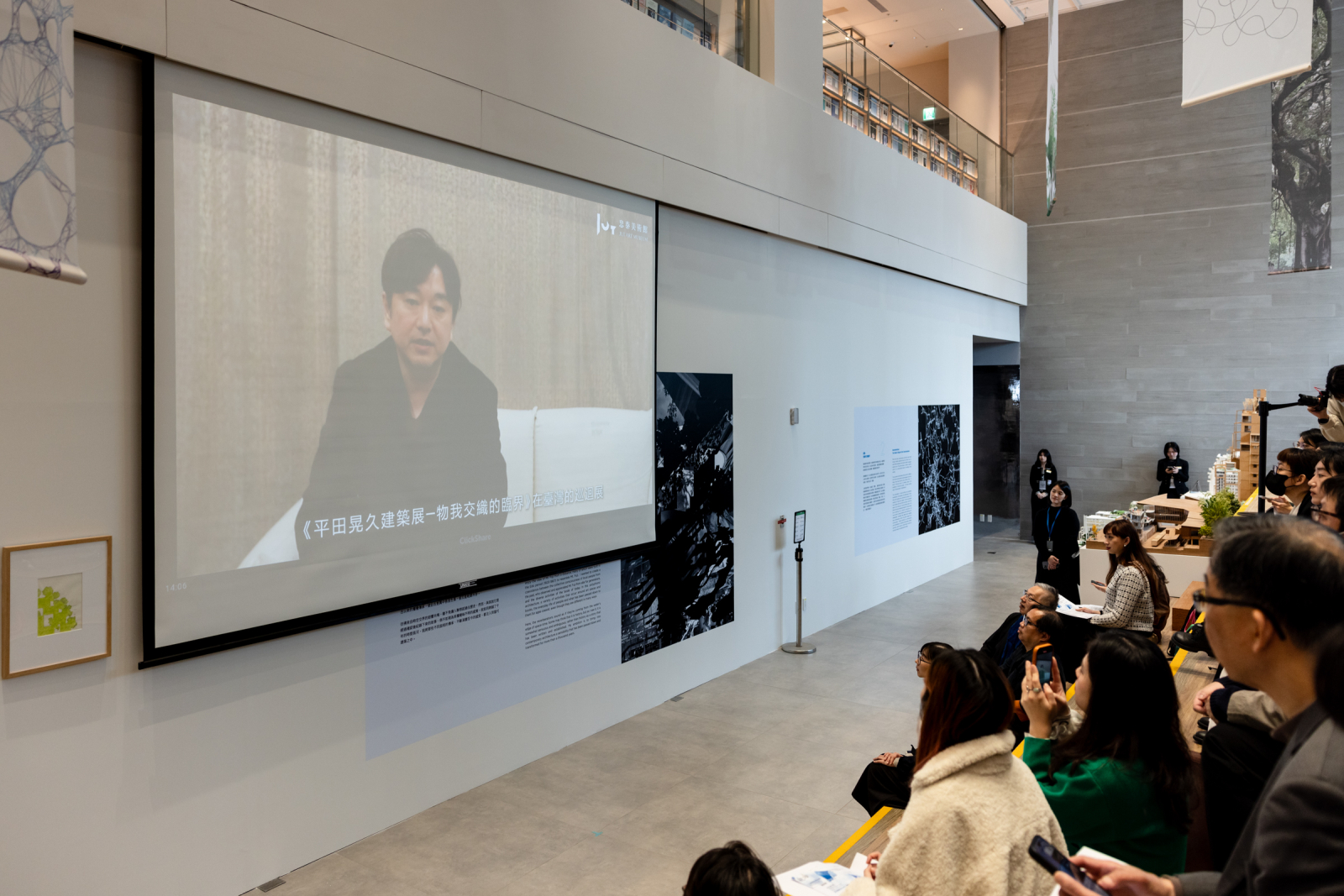
Apprenticed to Toyo Ito, Hirata is renowned for his nature-oriented architecture. His works integrate philosophical reflections on the relationship between humanity and nature, showing combined strengths in discourse and innovative design. In recent years, Hirata has also been involved in several architectural projects in Taiwan. This year, the Jut Art Museum works with Hirata again after his 2019 solo exhibition Human Nature: Generosity and Its Form. The new exhibition charts Hirata’s creative journey which is breakthrough-laden and growing to maturity. The Jut Art Museum expects the visitors to witness Hirata’s coming of age in his architectural vocabulary from a brand new perspective.
Titled Architecture Arises at the Water’s Edge for Humans, this new solo exhibition investigates how architecture responds to our future demands and creates new opportunities for the symbiosis of human beings and nature within the context of the ever-changing lifestyle and values of humankind. Applying his initial kernel concept of “karamari-shiro (entangling base)”, Hirata continues to probe into the field of architecture, treating architecture as an ecosystem, an organic domain in which humans and nature intertwine harmoniously. Furthermore, he has recently examined the invisible dimensions such as human consciousness, perception, and space-time through the concept of “reverberations,” drawing the connections and resonances among the past, present, and future thoughts of human beings in which new possibilities of future architecture find expression.
Theme I: Karamari-shiro: The Water’s Edge for the Body
The theme I is addressed through multiple keywords — “A Space That Does Not Give a Full View of It” echo modern interpersonal relationships with their blurred, connected yet unknown boundaries; “Pleats” simulate the principle of natural geometry that naturally grows in areas such as smoke and coral to increase usable surface area; “Lines” create intertwined spaces that resemble a bird’s nest; “A Tree” as an ideal architectural form become a foothold for the symbiosis of all living beings; and “Fermentation” allows people to blend harmoniously with architecture and the city.



Comprising square boxes, corrugations, and plants, Hirata’s work Tree-ness House in Tokyo combines housing with galleries. It creates a 3D internal space integrated with the garden and the street, hence a tree-like micro-universe. Designed by Hirata, the 12-story congregate housing Taipei Roofs in Taipei brings nature into the city. Its recession design offers each household a spacious balcony and uses eaves and plants to filter sunlight, thereby creating a cozy 3D area.
Theme II: Reverberations: The Water’s Edge for the Consciousness
Hirata contemplates qualities that emerge from gathering people and data. He describes how plants communicate through releasing volatiles, similar to the perception of scent or sound, as an example of what he terms “reverberations.” In the human world, architecture, as a product of human needs, brings together countless ideas and forge potential connections and resonances. These “reverberations” also influence the creation of contemporary architecture.
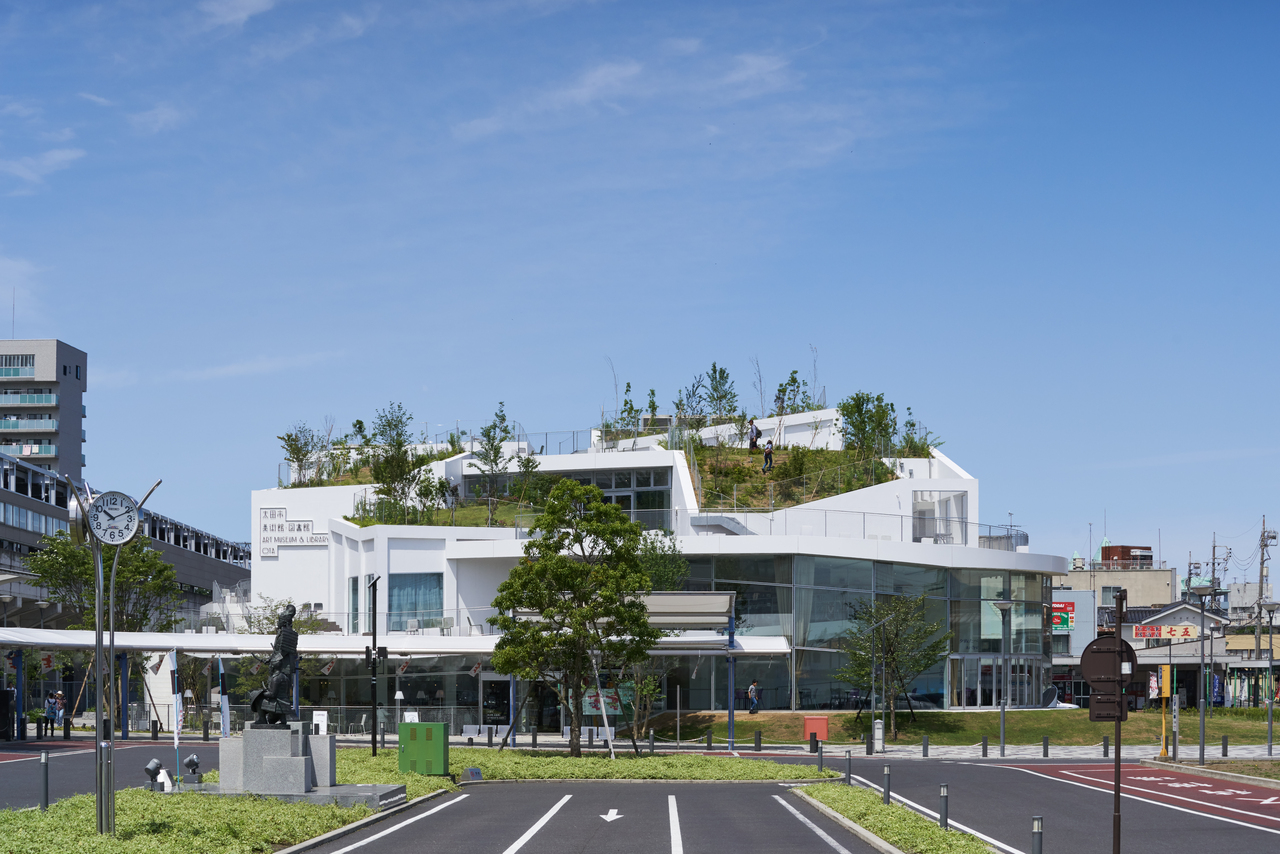
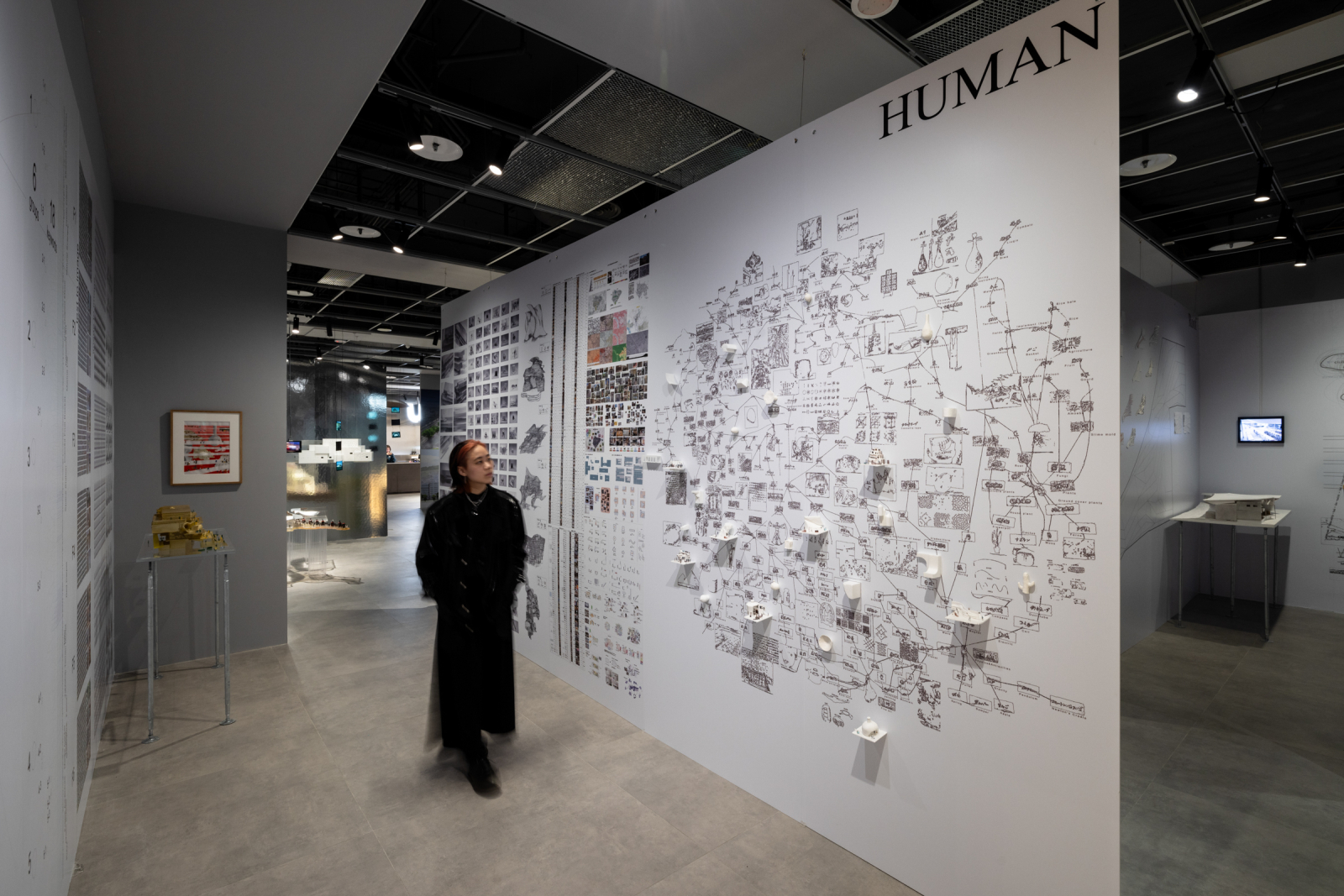
When designing Art Museum & Library, OTA, Hirata held multiple workshops to seek opinions from citizens and stakeholders. He repeatedly integrated collective thoughts with feedback, thereby creating a space imbued with the “reverberations” of collective unconsciousness, a cultural hangout of the citizens. Hirata’s ongoing project Museum and Art Gallery of National Taiwan University in Taiwan. It will introduce an element called “Fragments” to create interaction between the exhibition space and activities. The study of the shape of Fragments, which will trigger various exhibitions and activities, is being carried out by intertwining human and AI thinking.
Theme III: Reverberations of Reverberations: The Water’s Edge of Space-Time
Hirata further explores how architecture engages in dialogues with reverberations in different spaces and periods. He argues that new resonances will be produced when contemporary reverberations overlap with the history and culture of the past. Thus, architecture becomes a portal that transcends the confines of space-time and consciousness, which not only responds to the demands from contemporary life but also preserves and perpetuates the historical memories and experiences of the past.
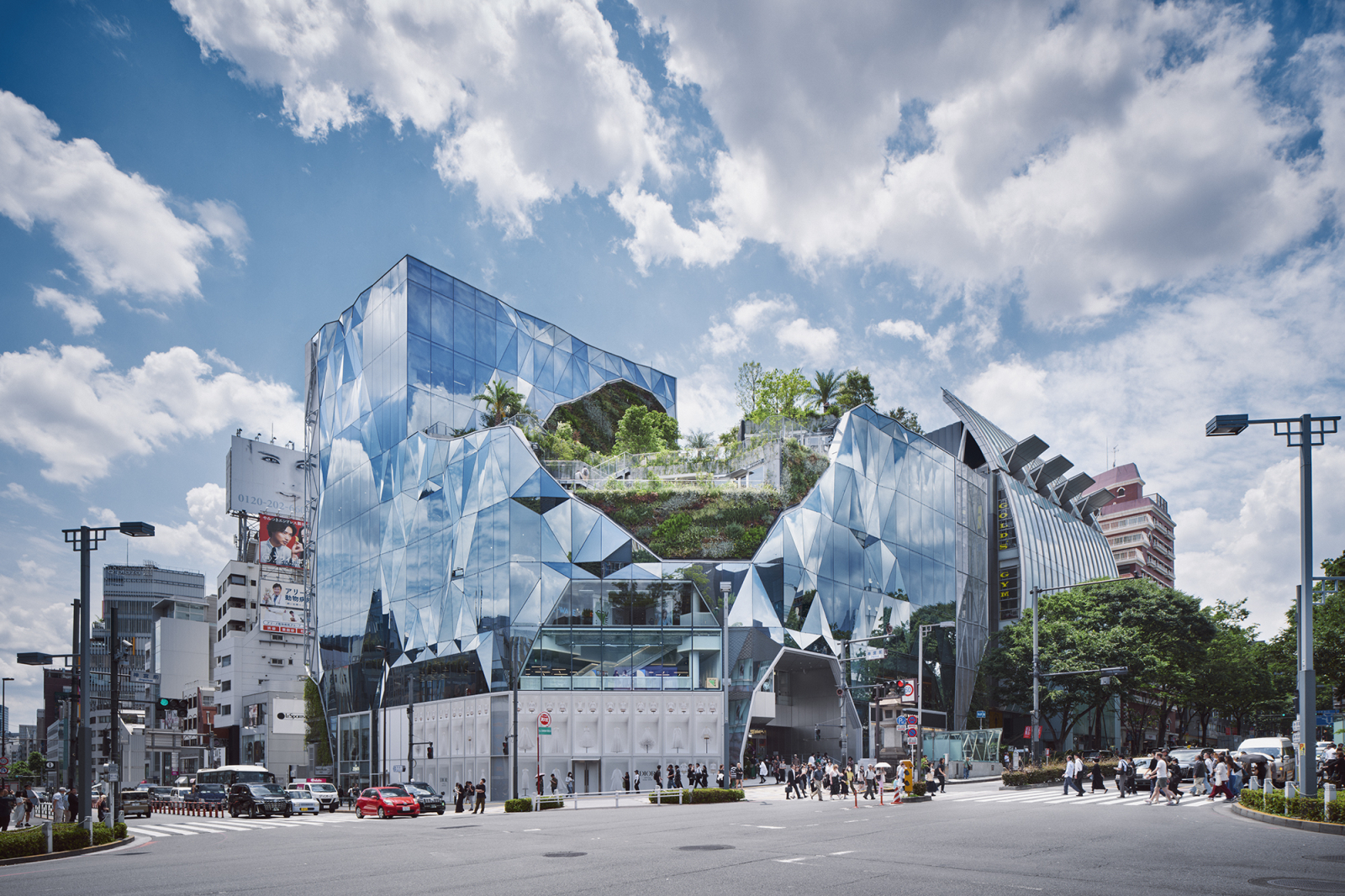
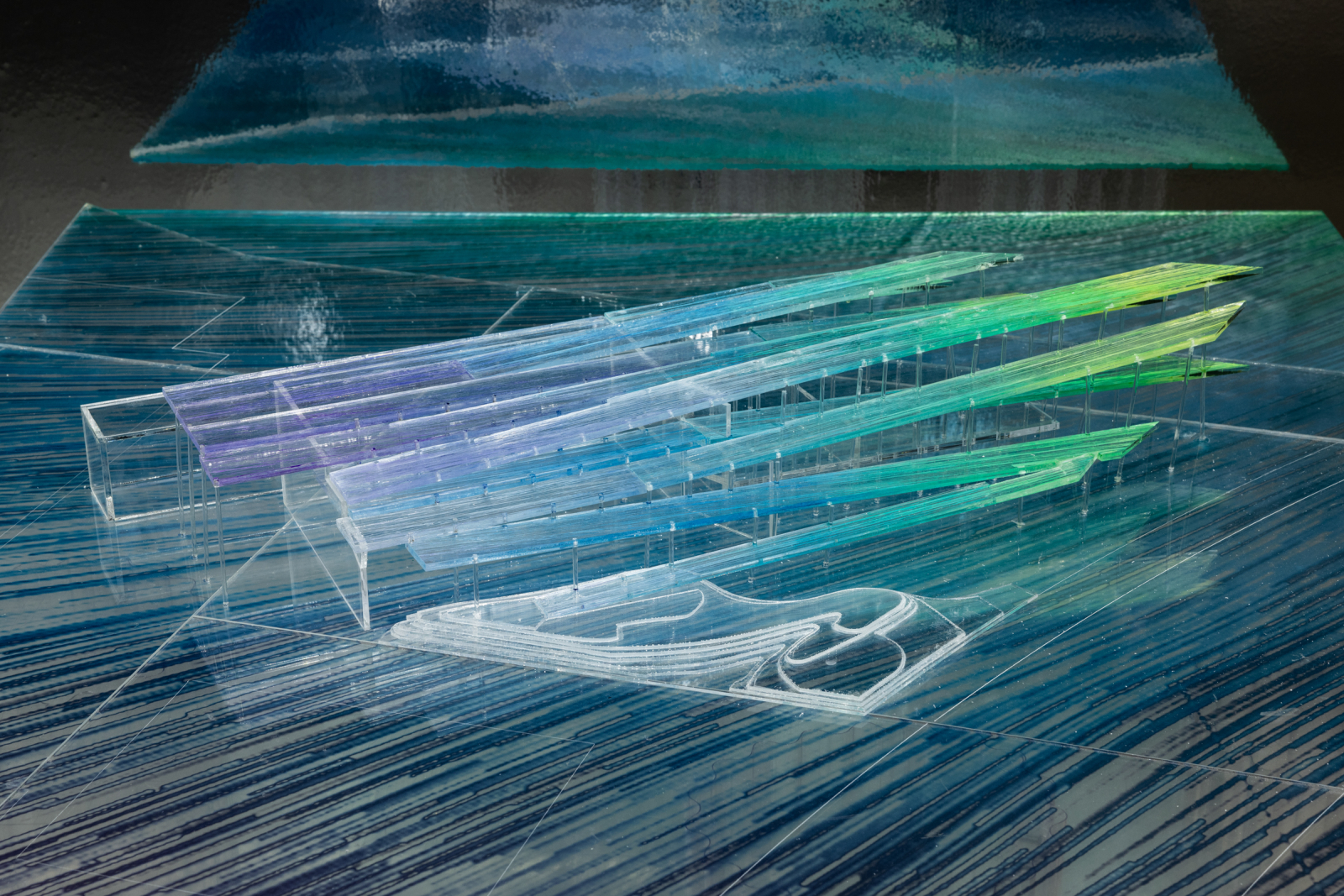
HARAKADO, the new landmark building inaugurated in Harajuku, Tokyo in 2024, applies the concept of knitting to its façade, resulting in a 3D glass curtain wall that reflects the sky and the keyaki-lined sidewalk along Omotesando and the natural greenery of the Jingu Forest. As a facility designed for the upcoming “Expo 2025” in Osaka, Japan, the EXPO National Day Hall “Ray Garden” features event spaces, rest and dining areas, exhibition venues, and a small stage. This design comprises several strip-shaped floors in combination with light, breeze, and greenery. The floors stretch in the prevailing wind direction and follow the corrugations of the Kansai terrain, exhibiting the living nature of the Earth as an organism.
Visit the exhibition for free and partake in the weekly draw for flight tickets! Fly to Japan and experience the master architect’s works in person!
The free-admission exhibition Akihisa Hirata: Architecture Arises at the Water’s Edge for Humans is on view from 15 February to 30 March 2025 at “Uncanny” on the 3rd floor of NOKE. The exhibition is accompanied by side events such as lectures and expert-guided tours. Architect Akihisa Hirata will conduct a talk in Taiwan on 22 March, where he will share his architectural philosophy and creative ideas face-to-face with the audience. The eponymous exhibition catalogues are on sale at the Tsutaya Bookstore on the 4th floor, and architecture aficionados may purchase them for collection. Besides, visitors may partake in the weekly draw for a round-trip ticket from Taipei to Tokyo by filling out the questionnaire, allowing you to personally experience Hirata’s architectural works in Japan! For details of related exhibition events and special offers, please visit the official website of the Jut Art Museum.
Information
Akihisa Hirata - Architecture Arises at the Water’s Edge for Humans
Date|2025.2.15(Sat.)-2025.3.30(Sun.)
Venue|NOKE 3F Uncanny (No. 200, Lequn 3rd Rd., Zhongshan Dist., Taipei City 104, Taiwan)
Opening Hours|SUN-THU 11:00-21:30, FRI-SAT 11:00-22:00
Admission|Free Admission
Website|https://jam.jutfoundation.org.tw/en/exhibition/107/5007
Organizer|Jut Art Museum
Coordinators|Akihisa Hirata Architecture Office, Jut Art Museum
Sponsors|JUT Group, Pauian Archiland
Event Partners|NOKE JUT RETAIL, ZSC, SKIRESORT CURRY, ONIBUS, TSUTAYA BOOKSTORE-NOKE
Venue Partner|Uncanny
Cooperator|Nerima Art Museum (Nerima Cultural Promotion Association)
Exhibition Supervisors|Aaron Y. L. Lee, Alex Y. H. Lee, Shan-Shan Huang
Exhibition Coordinators|Ying-Peng Chen, Chia-Ching Lin (Jut Art Museum)
| Yuko Tonogi, Akane Takahashi, Kanaho Tanimoto (Akihisa Hirata Architecture Office)
Assistant Coordinators| Yu-Chen Tsai, Yen-Hsiu Chen (Jut Art Museum)
| Yeh Yun-Chih (Akihisa Hirata Architecture Office)
Communication and Marketing Coordinator|Chi-Yun Chang
|Yen-Shan Li, Yu-Chin Liou, Yi-Ning Lin
Public Service|Tsung-Ping Hung, Pei-Chun Tsai
Administration Coordinator|Hsin-Yi Lin
Special Design|Akihisa Hirata Architecture Office
Graphic Designer|Min-Wei Liu
Lighting Design|LigtTemp
Multimedia Design|UN ART
The press kits can be downloaded in the link:
- English Version https://drive.google.com/drive/folders/1I_jlDlPtAeInyKb6OxIR4qAd7o1Hxt57?usp=sharing
- Japanese Version https://drive.google.com/drive/folders/1sXncVSKNe1B0J-7OrGVkdi6CMsH5Bsem?usp=drive_link
Standard Usage for Images: Photo credit/by must be given where applicable, and please indicate © Jut Art Museum.
